Are you not so flexible? Do you find it hard to kick high or hit a head kick? Flexibility makes it easier to kick high, but it’s not the only factor.
To kick higher there are 4 fighting components to work on:
- Flexibility
- Kicking technique
- Stability
- Focus
Flexibility increases your mobility; kicking technique guides your leg to your target; stability helps to keep your balance; and with focus, you bring it all together.
Which parts go well for you? And which component needs improvement? Read on for exercises, tips, and techniques that help you kick higher.
What are the benefits of increased flexibility?
Flexibility determines the length of your muscles. And with longer muscles, you can control a bigger part of your movement. Kicking also costs less energy when you’re flexible. Because, where short muscles pull on your leg as a kind of elastic band, long muscles offer less resistance and hence increase your mobility.
How can I become flexible enough for a high kick?
The best way to increase your flexibility is by stretching. In part, you already do this when you’re practicing kicking and knee strike techniques. Yet, for high kicks, it helps to stretch also:
- Before training
- After training
- During a stretch training
How to stretch before a workout?
Do dynamic stretches – stretches done in motion – as part of your warming up. Doing these stretches dynamically is essential, because static stretches cause you to temporarily lose strength – strength that you still need during your training.
The first 2 minutes of this video demonstrate excellent dynamic stretches. Follow these with shadowboxing (an exercise during which you strike in the air), starting with mid kicks and knee strikes and going higher as you warm up.
The goal of stretching before training is to loosen and warm up your muscles, not to increase your flexibility. With warm and loose muscles, you make optimal use of the flexibility that you have. Accordingly, you’ll move more freely during your training (important for kicking high), and you’ll be less prone to injuries – not unimportant either.
What stretches to do after kickboxing?
Once your training is finished, you don’t have to worry about temporary strength loss anymore – the perfect moment for static stretching. Take 5 – 10 minutes to do static stretches, during which you hold every stretch position for 10 – 30 seconds.
Continue from minute 2 onward in the video above for good post-workout stretches. This is still not the moment to increase your flexibility, because you’ve already challenged your muscles during the training. So, time to relax.
Nice bonus: By stretching after training, you’ll not just stay flexible, but you also recover faster and get less muscle aches.
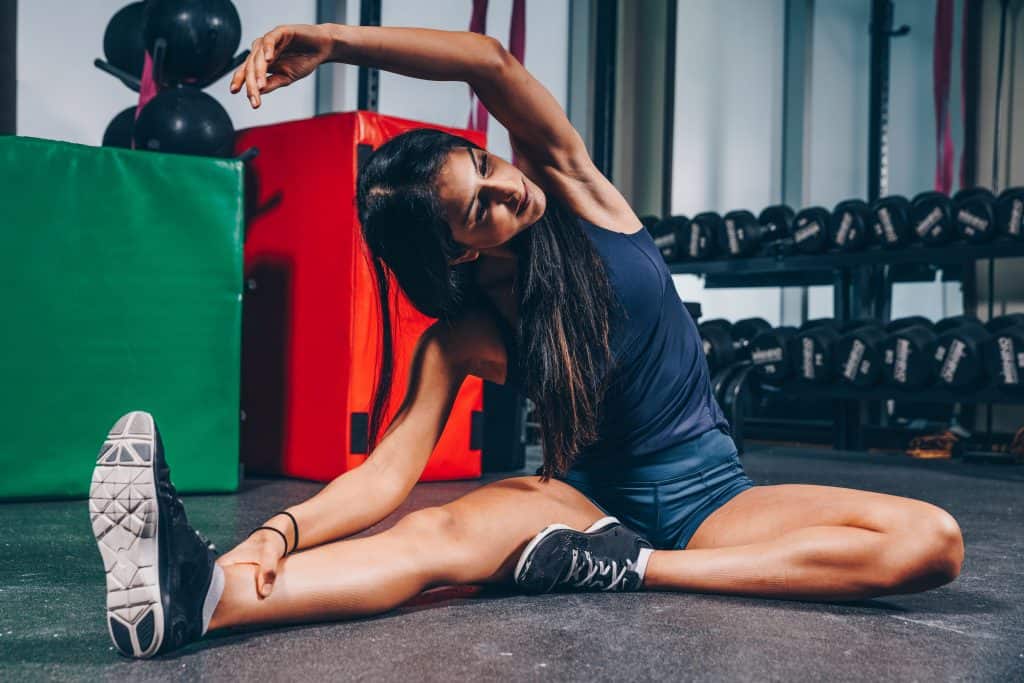
How can I increase my kicking height?
Dedicate a training to stretching for increased flexibility. Start this stretch training with a warming up. Then hold each stretch position for about 60 seconds (you can split this in 2 x 30 seconds) and gradually build up to 90 – 120 seconds.
As a warming up you can do dynamic stretches or hold each stretching position for 5 – 10 seconds. Of course, you can also shadowbox, run, or skip rope for 5 – 10 minutes.
At first, long stretches can be very uncomfortable. However, once you stretch regularly, your muscles get used to it and you’ll be able to relax and actually get comfortable in awkward positions.
In order to increase your flexibility for high kicks, you can also do Yoga, Pilates or Gymnastics.
Always do stretch trainings on days that you’re not doing any other training, or otherwise as long as possible before or after your training.
How do you do a high kick for beginners?
A roundhouse head kick consists of 6 steps:
- Step your front foot out to the side
- Raise your kicking leg, with your knee aimed at the target
- Lift the heel of your base foot
- Turn the heel of your base foot toward your target
- Stretch out your kicking leg through the target
- Return your kicking leg so that you end up in fighting position
Step 2, 3 and 4 are the most important technical elements for kicking high. By aiming with your knee (step 2) you lift your kicking leg in the right position. By lifting the heel of your base foot (step 3), you get a little bit higher. By turning your base foot (step 4), your hip turns along. This allows you to stretch your leg out higher and kick through your target (step 5).
If you apply the kicking technique correctly, you don’t even need much flexibility to hit a high kick. I know plenty of kickboxers who are stiff as a board during stretching, but whose legs easily find my head during sparring.
How do you properly kick someone?
In order to kick your target with force, it’s essential that your force doesn’t stop at the target but that it goes right through it. So, do you want to deliver maximum impact and damage? Focus on turning your hip over (step 4) and stretching your kicking leg through your target (step 5) once you hit it!
With kickboxing and Muay Thai you don’t score points by just touching your opponent. It’s about landing impactful strikes and doing damage.
How do you protect yourself while kicking?
In order to protect yourself while kicking, you have to do 2 things:
- Make a contra movement with your arms.
- Angle your upper body in the opposite direction of your kicking leg
So, for a right kick, you move your left forearm in front of your face, and throw your right arm back toward your hip so that your right shoulder protects your chin. Meanwhile, you angle your upper body to the left so that you move it outside of your opponent’s line of attack. For left kicks, you move vice-versa.
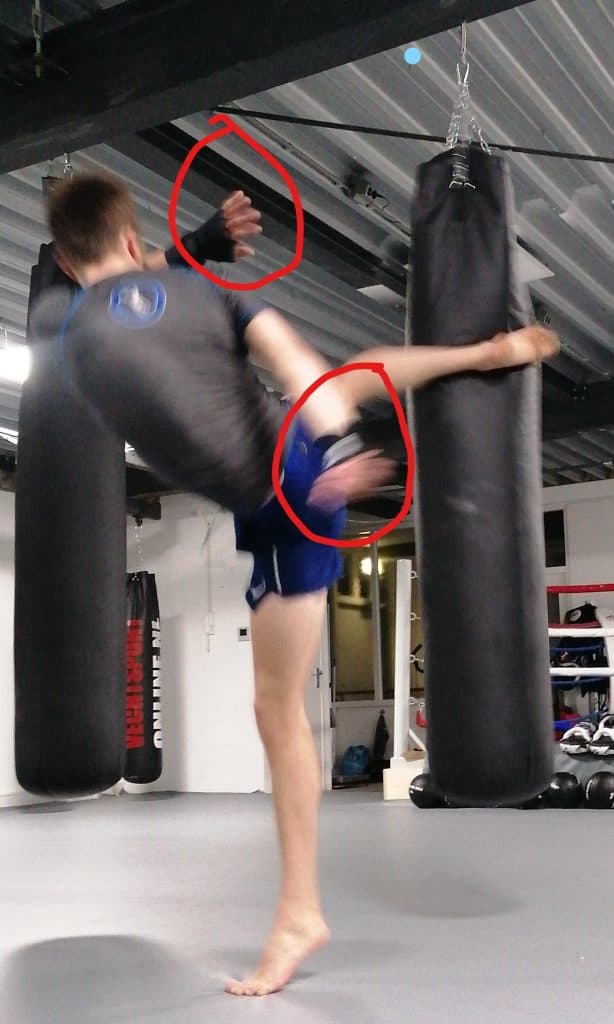
With the contra-movement, you don’t just protect your head for potential counterstrikes, you also generate more power and keep your balance while your leg is in the air.
With good technique, you kick higher, harder, and keep your balance.
Is balance important for fighting?
If you lose your balance while kicking, you won’t hit your target well. Moreover, without balance you’re extra vulnerable. So while good kicking technique helps you to keep your balance, you still need the stability to balance on the ball of your base foot.
As you can see above, a high kick is a kind of side split on the ball of your foot. This is not an easy movement – hence this article. In order to be stable in this position, you need strong feet, legs, glutes, and core muscles. Similar to stretching, you already train these by practicing martial arts like Muay Thai Kickboxing.
How can I improve my kickboxing balance?
In order to train your stability, do the following exercises:
- Balancing on 1 leg – start with 2×1 minute
- Walking on your toes – start with 2×15 steps
- Single-legged Squats– start with 2×5 for each leg. Start with small knee bends and go deeper as your strength increases.
- Single-legged calf raises – start with 2×5 for each leg.
- Lunges – start with 2×5. Add backward and sideward lunges as you get stronger.
Is all of this getting easy? Add some weight, balance on a folded towel or use a balance board, and challenge yourself with underneath variation.
After spraining my ankle several times – kickboxing in the grass isn’t always such a good idea – my physiotherapist recommended the app “Ankle Sprain Exercises.” While these exercises don’t seem like much, I noticed big improvements in my stability while kicking, and kneeing – especially when exhaustion sets in.
Yoga, Pilates and Gymnastics are also excellent sports to train your stability.
Mental focus
In order to throw and land your high kicks effectively you need to bring all the elements together. This requires mental focus. Not just for the kicking itself, but also while training each individual element.
How does focus help stretching?
To increase your flexibility, you have to focus on the muscle(s) that you want to stretch. Are you not feeling any stretch or do you feel the stretch in the wrong muscle? Carefully adjust your position until you feel the right muscle stretching. By focusing, you will automatically feel what position is right for you.
Why is attentional focus important?
If you want to kick higher and harder, you have to focus on each individual step of the kicking technique. This works best when you’re shadowboxing or kicking a heavy bag. During these solo endeavors, you can focus on your movement, feel it, analyze it, and perfect your technique accordingly.
Pro-tip: film yourself during your kicking practice; you may discover even more sub-steps that help you improve your kicking technique!
You also need focus to effectively process the feedback from your trainer and training partners. Watch and listen carefully when you receive instructions, and don’t hesitate to ask questions if something is not (completely) clear to you.
Subsequently, practice the technique at 50% speed and power, and ask for feedback on your execution. This process can be a struggle and even downright annoying – a challenge on its own – but by focusing on improving this process will grow on you.
How to keep your balance during a high kick
To stay balanced, you have to focus on your weight distribution. Start with your weight centered, and shift it to your base leg as your kick moves to the target. After hitting your target, move your leg back into fighting position and center your weight again between both legs.
This same focus you need while practicing stability exercises. Is the exercise single-legged? Shift your weight to your base leg, contract your glute muscles, and pull your navel back – this way you automatically keep a straight back. Practicing lunges? Keep your weight centered so that your it’s is evenly distributed over both legs.
By focusing, it’s easier to keep your balance. Nice bonus: when you’re focused, stability exercises automatically get less boring too.
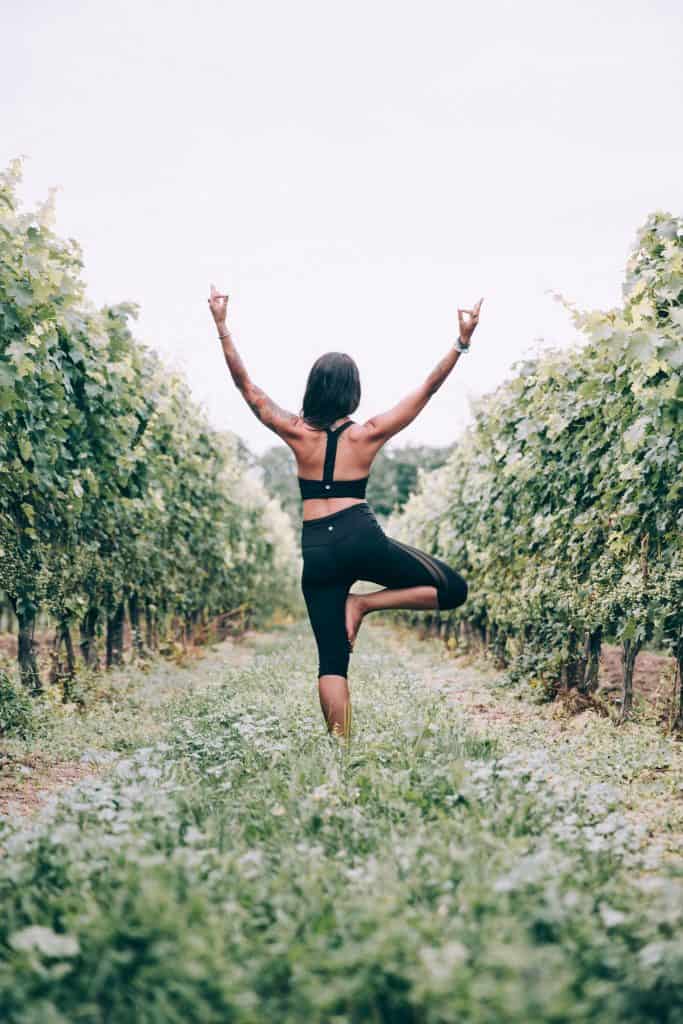
How does martial arts improve focus?
Your focus will improve along with your training practice. Yet, there are more ways to train your focus, for example meditation, mindfulness, yoga, or visualization. Maybe these sound like hippy bullshit to you, but I’m quite certain that you’re (unconsciously) practicing most of these already.
While reading the kicking technique above, you’ve undoubtedly imagined what this looks like. That’s visualization. Have you tried stretching before? That’s an element of yoga. If you practice a new technique, you consciously focus on your movements – that’s mindfulness.
And what about meditation, when am I doing that already? The practice of meditation is a bit more complex, so I’ll elaborate on that in another article.
Why is it hard to breathe when I stretch?
If you focus on the uncomfortable feeling of a stretch, your muscles automatically contract; this is a protective mechanism. But, when you shift your focus from your discomfort to your breath, you’ll automatically start to relax – not just your body, but your mind as well.
Are you eventually able to accept your lack of comfort? Then this is the point where “stretching” becomes meditative and transitions into yoga.
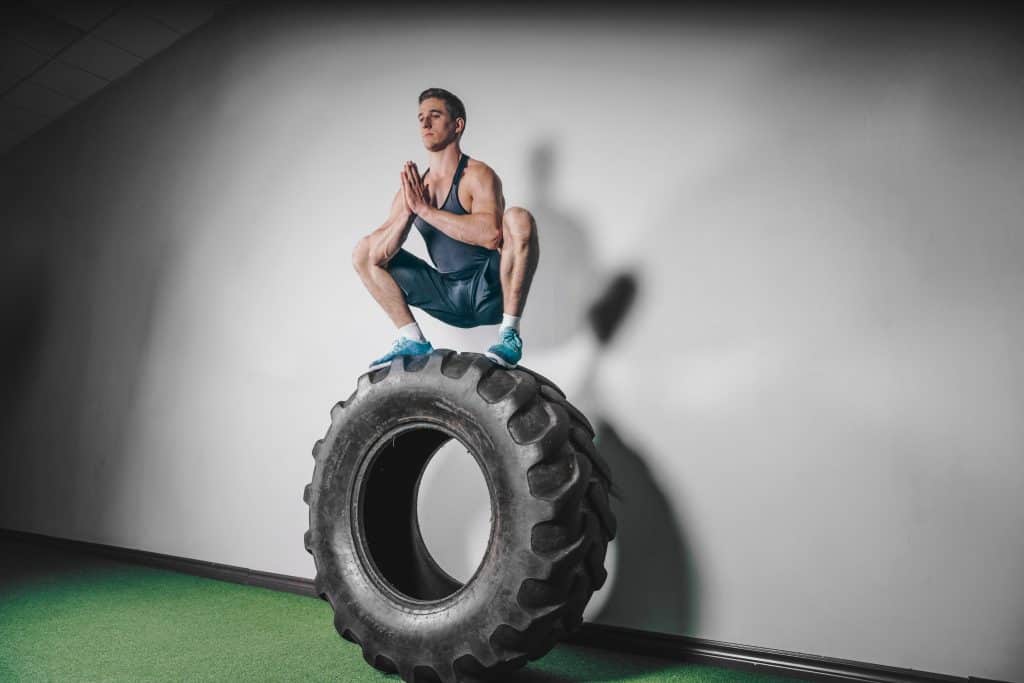
How to breathe while stretching
Slow down your breathing so you start to relax. Then, use your exhales to relax and slowly stretch out your muscles. The more you can slow down, the further you’ll be able to stretch – every breath another few millimeters. Meanwhile, use inhales to check your posture, and correct if necessary. This way you stretch effectively and prevent injuries.
How to kick higher
There are 2 tricks that help you kick higher:
- Using explosive force
- Tilting your upper body
As I explained earlier, your muscles work like a kind of elastic band, meaning that the resistance increases the further you stretch them. This “problem” can be solved with explosive force. By explosively throwing your kicking leg up, you’ll be able to kick higher.
Important note: Make sure that your muscles are completely warmed up before you explode – otherwise you risk injuring yourself badly!
Tilting your upper body also helps to kick higher. The further you tilt your upper body down, the further your kicking leg can go up. This way you can even high kick opponents who are (much) longer than you are.
Keep in mind that it’s harder to keep your balance when you use explosive force and/or tilt your upper body. So, if you want to use these “tricks” effectively, it’s important to work on your stability training as well.
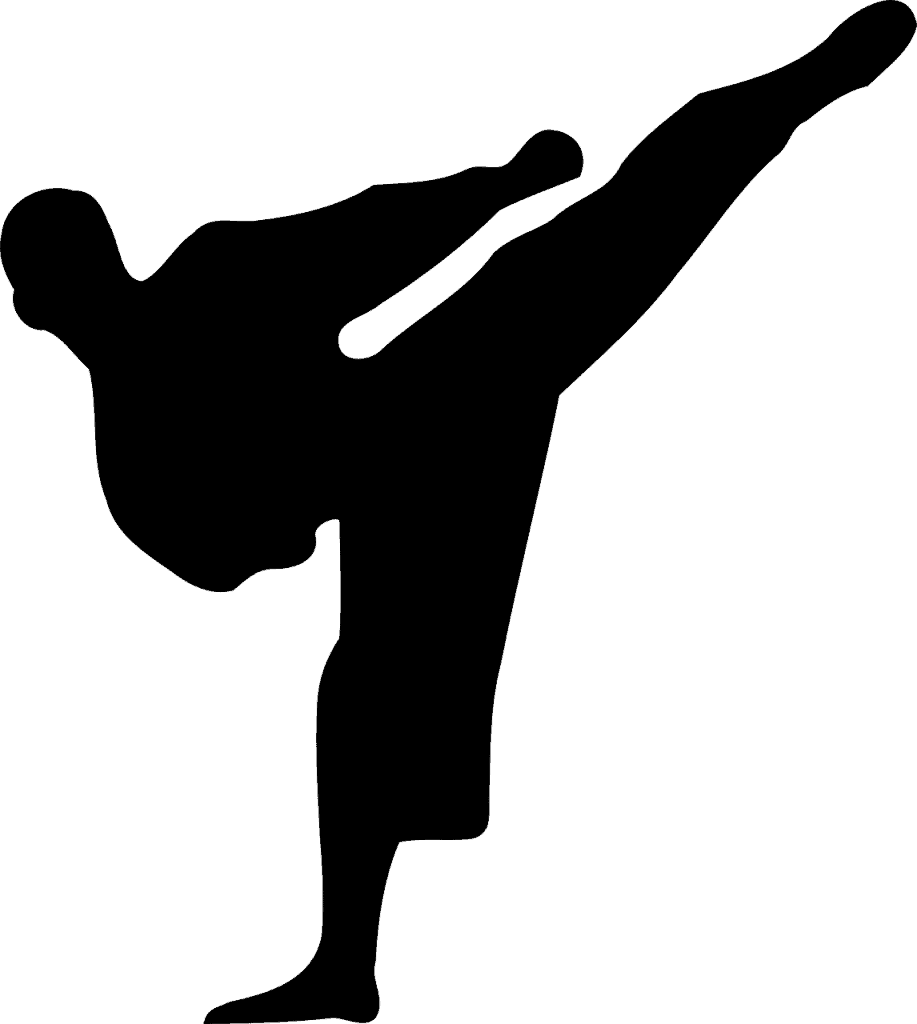
Does foam rolling help to kick higher?
Foam rolling – also known as “self-myofascial release” is a bit like massaging your muscles. It has been proven to lengthen your muscles, reduce muscle ache, and speed up recovery. While foam rolling doesn’t increase flexibility as much as static stretching does, the advantage is that you don’t temporarily lose strength from it. This makes foam rolling perfect for warming up.
How do I begin kicking higher?
You guessed it right: practice, practice, and keep practicing. Warm up well and practice your high kicks while shadowboxing and kicking the heavy bag, Thai pads, and kicking shields. Do you have good sparring partners? Then practice your high kicks during sparring too – this is the only way to get comfortable throwing them.
Don’t focus on your kicks during sparring – focus on your target. Where exactly are you going to hit your target? This way you visualize where your kicking leg should go – with enough practice, your body will automatically follow.
Just like strength and conditioning, it’s use-it-or-lose-it when it comes to flexibility and stability. So, make a habit to train these regularly. Keep in mind that it takes time to train a new habit, so allow yourself to build up gradually. For example, start with 2 weeks of focusing on your flexibility training, and then add a few stability exercises.
Ps. Do you spend (some of) your evenings or weekends watching TV? Try doing this while holding a stretching position; this way you can relax and increase your flexibility at the same time – allowing you to kick higher in no time!
- Written by Merlijn Broersma
Recent Posts
The previous articles covered the foundation of fighting nutrition: the best pre- and post-workout meals, fight day nutrition, and what your everyday diet should include. This article will cover the...
Previous articles have discussed pre- and post-workout meals, fight day nutrition, and how to train without eating anything at all, so called “fasted workouts.” That means that there’s one...